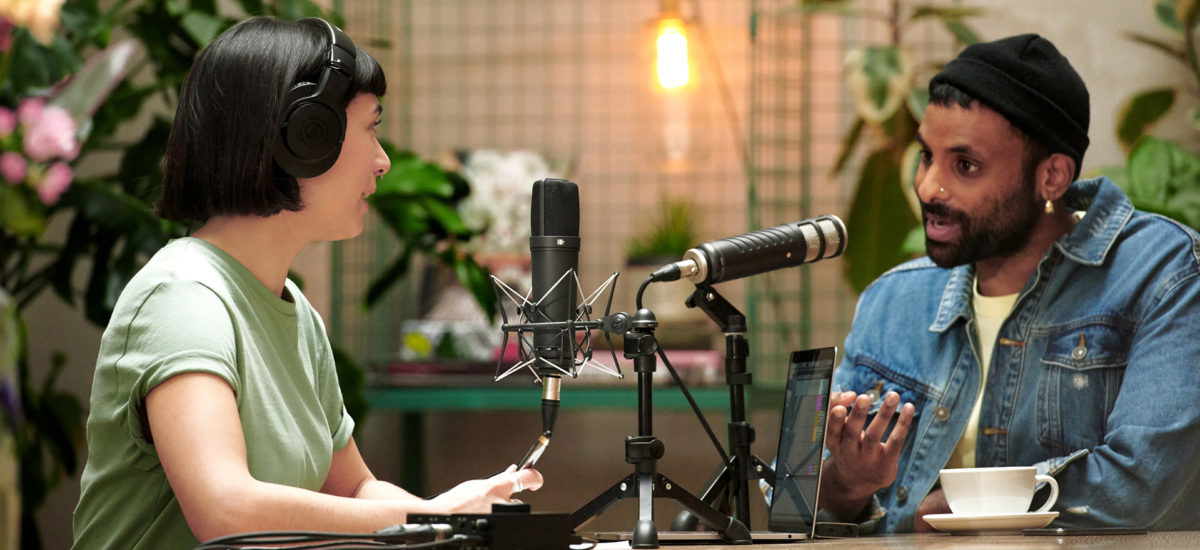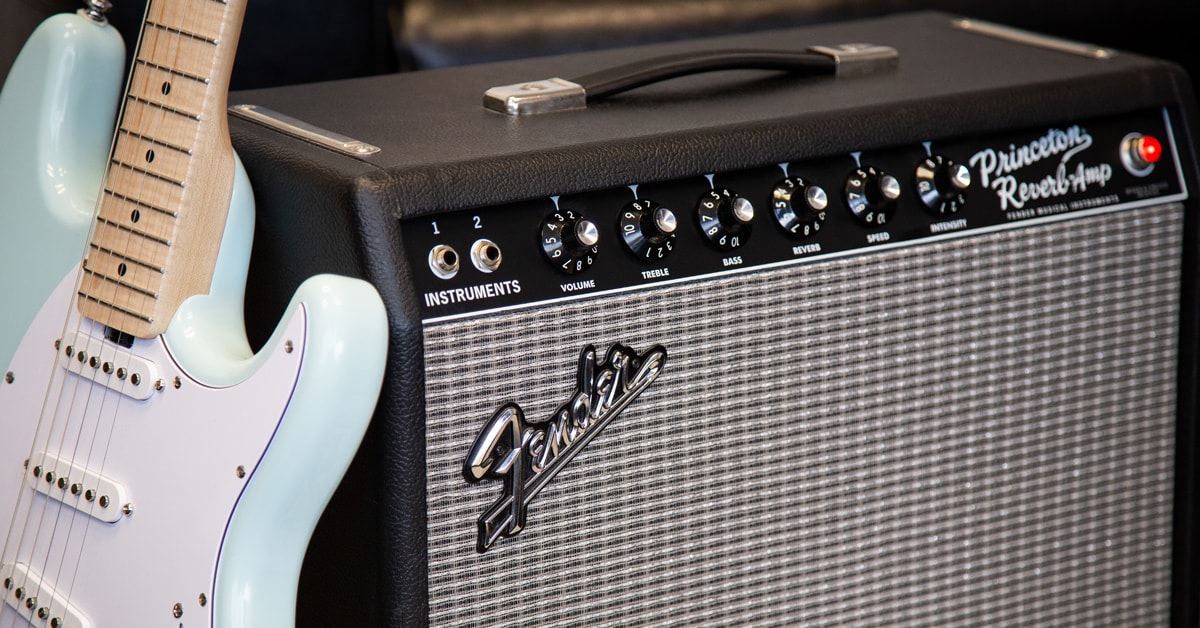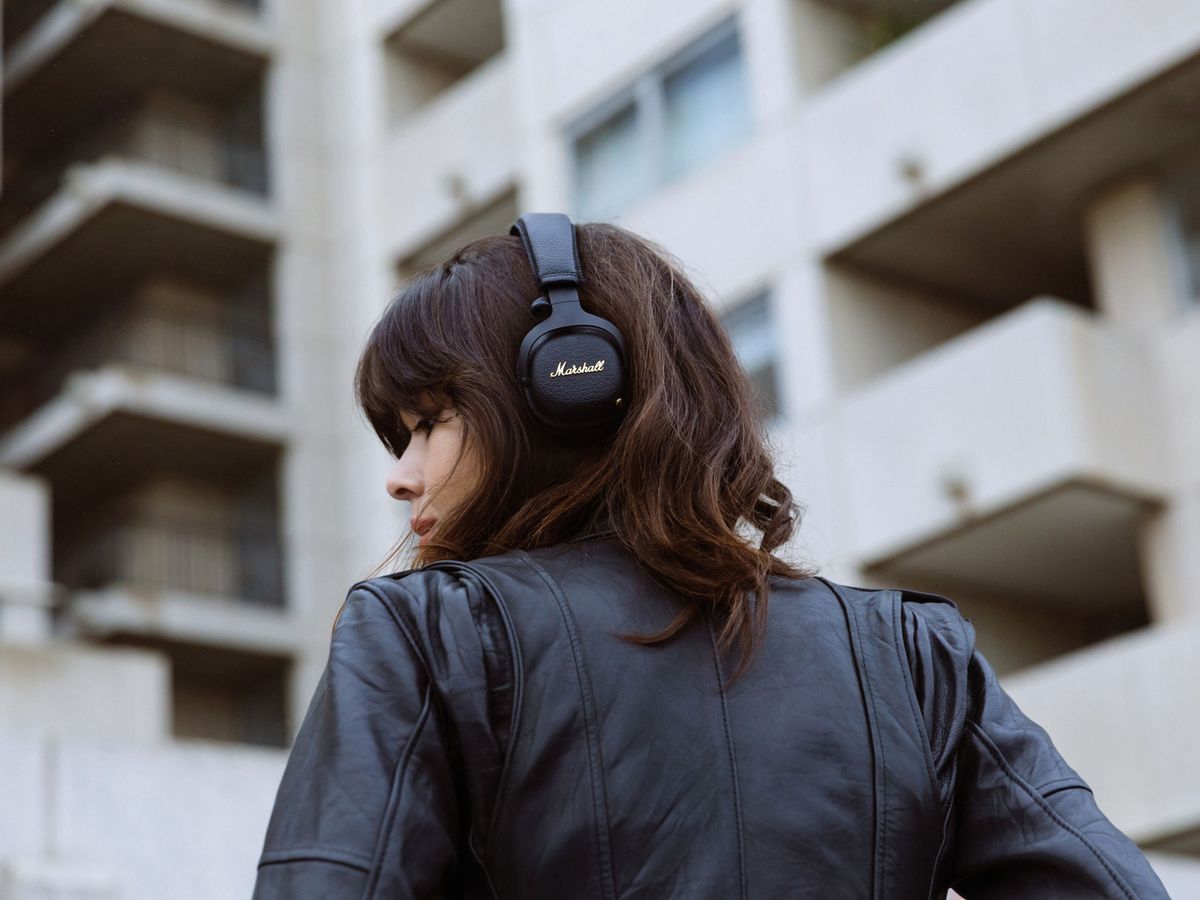Home>Events & Info>Podcast>How Does A Podcast Work


Podcast
How Does A Podcast Work
Modified: January 22, 2024
Discover how a podcast works and dive into the fascinating world of audio storytelling. Explore the power of podcasts and learn about their creation, distribution, and impact.
(Many of the links in this article redirect to a specific reviewed product. Your purchase of these products through affiliate links helps to generate commission for AudioLover.com, at no extra cost. Learn more)
Table of Contents
Introduction
Welcome to the world of podcasts, where audio content takes center stage and captivates listeners around the globe. Gone are the days of needing to tune in to live radio shows or wait for a specific time slot to catch your favorite programs. With podcasts, you have the power to listen to engaging and informative content whenever and wherever you choose.
But what exactly is a podcast? How does it work? In this article, we will delve into the world of podcasts, exploring how they are created, distributed, and consumed. Whether you’re new to the podcasting scene or simply looking to deepen your understanding, read on to unlock the secrets behind this ever-growing medium.
A podcast is an audio program that is typically episodic, meaning episodes are released regularly. Similar to radio shows, podcasts cover a wide range of topics, including news, storytelling, entertainment, education, and much more. The beauty of podcasts lies in their versatility, allowing creators to share their passions and expertise with a global audience.
At the heart of podcasting is the concept of on-demand content. Listeners can choose the podcasts they are interested in and subscribe to them using various podcast platforms or apps. Once subscribed, new episodes are automatically downloaded or streamed to the listener’s device, ensuring easy and convenient access to fresh content.
Podcasts come in a variety of formats, including solo shows, interviews, roundtable discussions, storytelling narratives, and even fictional audio dramas. This diversity allows podcasters to explore different styles and structures, tailoring their content to engage and entertain their audience.
Creating a podcast involves several steps, starting with recording and editing. Podcasters use high-quality microphones and audio recording software to capture their voices and any additional audio elements. Once recorded, the audio files are edited to enhance quality, remove any mistakes or inconsistencies, and add any necessary effects.
After the editing process is complete, the podcast episode is ready to be hosted and distributed. Hosting platforms provide space for podcasters to upload their episodes, store their audio files, and generate an RSS feed. The RSS feed is a crucial element as it allows podcast directories and apps to index and display the podcast, making it discoverable to potential listeners.
Listeners can subscribe to a podcast by utilizing podcast platforms or apps such as Apple Podcasts, Spotify, Google Podcasts, or Stitcher. By subscribing, users receive automatic updates when new episodes are released. They can also stream or download episodes for offline listening, providing flexibility for those on the go.
Now that we have a grasp of what podcasts are and how they are created and distributed, let’s explore the benefits of podcasting for both creators and listeners. Whether you’re considering starting your own podcast or are simply looking for new sources of information and entertainment, podcasts have something for everyone.
What is a Podcast?
A podcast is an audio-based medium that allows individuals to create and share their own content with a global audience. It is a form of episodic digital storytelling, similar to a radio show, but with the convenience and flexibility of on-demand listening.
In its essence, a podcast is an audio program that can cover a wide range of topics, such as news, entertainment, storytelling, education, self-help, and more. Podcasts are typically released in a series of episodes, which can be listened to sequentially or independently, depending on the content and personal preference.
Podcasts have gained immense popularity in recent years due to their ease of consumption and the ability to cater to niche interests and passions. With just a few taps on a smartphone or a few clicks on a computer, listeners can access a vast array of podcasts and explore topics that align with their interests and curiosities.
One of the main advantages of podcasts is the freedom from rigid broadcast schedules. Unlike traditional radio shows, podcasts can be listened to at any time, allowing listeners to enjoy their favorite programs without being tied to a specific time slot. This flexibility makes podcasts incredibly convenient for busy individuals, commuters, or anyone looking for entertainment on the go.
The format of podcasts can vary widely, depending on the creator’s style and preferences. Some podcasts feature solo hosts who share their expertise or personal experiences, while others involve multiple hosts engaging in discussions or interviews with guests. There are also narrative-driven storytelling podcasts that captivate audiences with immersive audio narratives or fictional audio dramas.
Podcasts are typically made available through podcast directories or platforms. Examples of popular podcast platforms include Apple Podcasts, Spotify, Google Podcasts, and Stitcher. These platforms serve as hubs where podcast creators can upload their episodes, allowing listeners to easily discover, subscribe, and listen to their favorite podcasts.
With the rise of smartphones, listening to podcasts has become more accessible and convenient than ever before. Most podcast platforms offer mobile apps that enable listeners to download or stream episodes directly to their devices. This allows for offline listening, making podcasts an ideal companion during long commutes, exercise sessions, or any other time when an internet connection may not be readily available.
So, whether you’re seeking to expand your knowledge, be entertained, or simply embrace a new form of storytelling, podcasts offer a rich and diverse landscape of audio content. Tune in, listen up, and explore the amazing world of podcasts!
Understanding Podcast Format
Podcasts come in a variety of formats, each offering a unique style and structure to captivate and engage listeners. Understanding the different podcast formats can help you find the content that aligns with your preferences and interests.
1. Solo Shows: In this format, a single host takes center stage and delivers the content. This could involve sharing personal experiences, discussing a specific topic, providing educational insights, or simply expressing opinions. Solo shows allow for a deep dive into a particular subject and often provide the host’s unique perspective.
2. Interviews: In interview-based podcasts, hosts invite guests who are experts in their respective fields or individuals with interesting stories to share. The host asks questions, and the guest provides insights, advice, or personal anecdotes. These interviews offer listeners the opportunity to gain knowledge from industry leaders, professionals, or individuals with captivating life experiences.
3. Roundtable Discussions: This format brings together a group of hosts or experts who engage in lively discussions on various topics. It can be a panel discussion or a casual conversation, and often offers diverse perspectives, debates, and engaging interactions among participants. Roundtable discussions are ideal for exploring multiple viewpoints and fostering insightful conversations.
4. Storytelling Narratives: Storytelling podcasts take listeners on a narrative journey through captivating storytelling techniques. They can cover a wide range of genres, from true crime and history to personal narratives and fictional stories. These podcasts often feature high-quality production, immersive sound design, and expert storytelling to create a compelling audio experience.
5. Fictional Audio Dramas: Similar to old-time radio plays, fictional audio dramas bring stories to life through audio. These podcasts feature voice actors, sound effects, and music to create a vivid and immersive storytelling experience. Fictional audio dramas encompass genres like mystery, science fiction, fantasy, and more, allowing listeners to engage with thrilling narratives in a unique way.
Regardless of the format, most podcasts follow an episodic structure, with new episodes released on a regular schedule. This consistency allows listeners to anticipate and engage with new content from their favorite podcasts.
Understanding the podcast format is essential for both creators and listeners. Creators can tailor their content to match the desired format and engage their target audience effectively. Listeners can explore different formats to discover podcasts that align with their preferences and offer an enjoyable listening experience.
Now that you have a better understanding of the different podcast formats, you can dive into the vast world of podcasts and find the ones that resonate with you. Whether you prefer solo shows, engaging discussions, or immersive storytelling, there’s a podcast out there waiting to capture your imagination.
Recording and Editing
Recording and editing are essential steps in the podcast production process, ensuring high-quality audio and a polished final product. Let’s explore how podcasters bring their episodes to life through these key stages.
1. Recording: To capture clear and professional-sounding audio, podcasters use quality microphones and recording equipment. There are various types of microphones available, including dynamic microphones, condenser microphones, and USB microphones, each with its own strengths and applications. The choice of microphone depends on factors such as the recording environment, budget, and personal preference.
The recording process typically takes place in a quiet and controlled environment to minimize background noise and distractions. This could be a dedicated home studio, a soundproofed room, or even a closet transformed into a makeshift recording space. The goal is to create a clean audio recording that is free from any unwanted noise or interference.
2. Editing: Once the audio has been recorded, it’s time to edit the podcast episode. Editing involves several tasks, including removing any mistakes, reducing background noise, adjusting volume levels, and adding any necessary effects or enhancements.
Editing software, such as Adobe Audition, Audacity, or GarageBand, is used to manipulate the audio files. Podcasters can trim sections, remove awkward pauses, splice different audio clips together, and fine-tune the overall audio quality. They can also add intro and outro music, sound effects, or special segments to enhance the listener’s experience.
Editing is not only about polishing the audio but also ensuring the flow and cohesiveness of the episode. This involves organizing segments, transitions, and ensuring a consistent pace throughout the podcast. The goal is to create a seamless listening experience that engages the audience from start to finish.
During the editing process, podcasters may also decide to include show notes or timestamps, providing listeners with additional details or links related to the episode’s content. Show notes can help listeners navigate through the episode and refer back to specific moments or resources discussed.
Once the editing is complete, the final step is to export the audio file in a suitable format. Popular audio file formats for podcasts include MP3 and WAV, as these formats offer good sound quality while keeping file sizes manageable for downloading and streaming.
Recording and editing may seem like technical tasks, but they play a crucial role in delivering a professional and engaging podcast episode. By ensuring high-quality audio and seamless editing, podcasters can captivate their audience and provide a rewarding listening experience.
Now that we’ve explored the recording and editing process, let’s move on to the next stage of podcast production: hosting and distribution.
Hosting and Distribution
Once a podcast episode has been recorded and edited, the next step is to host and distribute it to make it accessible to a wide audience. Hosting platforms play a crucial role in storing and serving podcast episodes, while podcast directories and apps ensure that listeners can discover and subscribe to the podcast.
1. Hosting: Podcast hosting involves uploading the audio files to a dedicated hosting platform that specializes in podcast storage and delivery. Popular hosting platforms include Libsyn, Podbean, Blubrry, and Buzzsprout. These platforms provide podcasters with the necessary infrastructure to store their audio files securely.
When selecting a hosting platform, podcasters should consider factors such as storage space, bandwidth limitations, ease of use, analytics features, and pricing. It’s crucial to choose a hosting platform that meets the podcast’s specific needs and can handle the expected traffic and growth.
Hosting platforms generate an RSS feed for each podcast, which acts as a digital “broadcast” signal. The RSS feed contains information about the podcast, such as the episode titles, descriptions, publication dates, and the audio file URLs. This feed allows podcast directories and apps to automatically fetch and display the podcast’s episodes in their listings.
2. Distribution: Podcast directories and apps are the gateways for listeners to discover and subscribe to podcasts. These platforms provide searchable catalogs of podcasts, allowing users to explore different genres, topics, and hosts.
Popular podcast directories and apps include Apple Podcasts, Spotify, Google Podcasts, Stitcher, and TuneIn. These platforms offer user-friendly interfaces where listeners can search for specific podcasts, browse through recommended shows, and listen to episodes directly in the app or on their preferred devices.
Podcasters need to submit their podcast’s RSS feed to these directories and apps to make their shows available for discovery. Once the podcast is approved and listed, new episodes automatically appear in the podcast’s feed, allowing subscribed listeners to receive updates and download or stream the episodes directly from their chosen platform.
It’s worth noting that podcast directories and apps sometimes have their own submission processes and guidelines, so podcasters should ensure their podcast meets the requirements of each platform. This may include providing show artwork, writing compelling descriptions, and adhering to content guidelines.
By hosting the podcast on a reliable platform and distributing it to various directories and apps, podcasters can reach a wider audience and increase the visibility of their show. This accessibility ensures that listeners can easily find and subscribe to the podcast, ensuring a steady stream of loyal followers.
Now that you have a grasp of hosting and distribution, let’s explore how listeners can subscribe to podcasts and enjoy their favorite episodes in the next section.
Subscribing to a Podcast
Subscribing to a podcast allows listeners to receive automatic updates whenever new episodes are released, ensuring they never miss out on their favorite shows. Let’s explore how to subscribe to a podcast and stay connected with the latest episodes.
1. Choose a Podcast Platform: Begin by selecting a podcast platform or app that suits your preferences and device. Popular options include Apple Podcasts, Spotify, Google Podcasts, Stitcher, and many more. These platforms are available on smartphones, tablets, and computers, providing flexibility for listening on the go.
2. Search for the Podcast: Once you have chosen a platform, use the search function within the app to find the podcast you wish to subscribe to. You can search by the podcast’s name, host’s name, or specific keywords related to the content.
3. Review the Podcast: Before subscribing, take a moment to review the podcast. Check out the podcast’s description, read reviews, and listen to a few sample episodes to ensure it aligns with your interests and preferences. This step helps you make an informed decision before committing to regular updates.
4. Hit the Subscribe Button: Once you have found the podcast you want to subscribe to, simply click or tap the subscribe button. This action will indicate your interest in the podcast and ensure that new episodes are automatically delivered to your podcast library.
5. Manage Subscriptions: Podcast platforms allow you to manage your subscriptions within the app. You can view your subscribed podcasts, adjust notification settings, and organize your podcast library. Some platforms even offer options to create playlists or mark episodes as played to keep track of your listening progress.
6. Receive and Enjoy New Episodes: After subscribing, you will receive automatic updates whenever new episodes are released by the podcast. Depending on your app’s settings, you may receive notifications or find the new episodes in your subscribed podcast’s feed. You can then choose to stream or download the episodes, depending on your preference and internet connectivity.
Subscribing to a podcast allows you to build a curated collection of shows that cater to your interests. As you explore new podcasts and discover engaging content, you can subscribe to additional shows to diversify your listening experience.
Remember, subscribing not only ensures you receive the latest episodes but also supports podcast creators. By subscribing, you show your appreciation and help them gauge the popularity of their show, potentially leading to the creation of more episodes and improved content.
Now that you know how to subscribe to podcasts, let’s move on to the next section and explore how to listen to your favorite podcast episodes.
Listening to a Podcast
Listening to a podcast is an immersive and enjoyable experience that allows you to dive into fascinating conversations, insightful interviews, and captivating stories. Let’s explore how you can listen to your favorite podcasts and make the most of your listening experience.
1. Open Your Podcast App: Launch your chosen podcast app on your smartphone, tablet, or computer. You can access the app directly or search for it in your device’s app store to download and install it.
2. Explore Your Podcast Library: In the app, navigate to your podcast library or subscribed podcasts section. This is where you will see all the podcasts you have subscribed to. You can organize your library by creating playlists or using filters to easily find the shows you want to listen to.
3. Choose an Episode: Browse through your subscribed podcasts and select the episode you wish to listen to. You can choose based on the podcast’s title, description, or episode release date. If you’re new to a podcast, you can start from the latest episode or explore older episodes to get a sense of the show’s content and style.
4. Stream or Download: Depending on your preference and internet connectivity, you can choose to either stream the episode directly from the app or download it for offline listening. Streaming allows you to start listening immediately, while downloading ensures you can enjoy the podcast even when you’re not connected to the internet.
5. Adjust Playback Features: While listening to a podcast, most apps offer playback features to enhance your experience. You can adjust the playback speed to speed up or slow down the audio, skip forward or backward in the episode, or use the sleep timer to automatically stop playback after a set time.
6. Engage with Show Notes: Many podcast episodes come with show notes, which provide additional information, links, or timestamps related to the episode’s content. Show notes can be found within the app or on the podcast’s website and can enrich your understanding of the topics discussed in the episode.
7. Leave Reviews and Ratings: If you enjoy a particular podcast episode or find value in the overall show, consider leaving a review or rating on the podcast platform. This gesture helps support the podcast and provides feedback to the creators, encouraging them to continue producing great content.
8. Discover New Podcasts: Podcast apps often have features to help you discover new shows based on your interests or listening habits. Explore recommended podcasts or browse through different genres to expand your podcast library and discover new voices and perspectives.
Listening to a podcast allows you to immerse yourself in a world of knowledge, storytelling, and entertainment. Whether you listen while commuting, exercising, or relaxing at home, podcasts provide a versatile and convenient way to learn, stay informed, and be entertained.
Now that you know how to listen to podcasts, let’s move on to the next section and explore the benefits of podcasting for both creators and listeners.
Benefits of Podcasting
Podcasting has surged in popularity in recent years, and it’s no wonder why. This versatile medium offers a host of benefits for both podcast creators and listeners alike. Let’s explore some of the key advantages of podcasting.
1. Accessibility and Convenience: Podcasts are incredibly accessible and convenient. Listeners can enjoy their favorite shows at any time and from anywhere, whether it’s during their daily commute, while doing household chores, or while relaxing at home. With a smartphone or computer, podcasts are just a tap or click away.
2. Specialized and Niche Content: Podcasting allows creators to cater to specific interests and passions, making it easier for listeners to find content that resonates with them. From highly specialized topics to niche hobbies, podcasts cover a vast range of subjects, ensuring there’s something for everyone.
3. Engaging and Intimate Connection: Podcasting creates an intimate connection between hosts and listeners. The medium of audio allows hosts to speak directly to their audience, fostering a sense of familiarity and personal connection. Listeners often feel like they are part of a community, enhancing the overall listening experience.
4. Learning and Education: Podcasts provide a valuable platform for learning and education. From educational podcasts that cover a wide range of subjects to interviews with experts in their respective fields, podcasts offer a wealth of knowledge and insights, making it a convenient and engaging way to expand one’s horizons.
5. Flexibility for Creators: Podcasting provides creators with the freedom and flexibility to express their creativity. Hosts can explore different formats, experiment with storytelling techniques, and share their unique perspectives on various topics. This flexibility allows creators to find their niche and tailor their content to their audience.
6. Building a Community: Podcasts often foster a strong sense of community among listeners. From engaging with hosts through social media to connecting with other listeners who share similar interests, podcasts create a space for like-minded individuals to come together and share their thoughts, creating a sense of belonging and camaraderie.
7. Monetization Opportunities: For podcast creators, there are various monetization opportunities available. These include sponsored ad placements, merchandise sales, crowdfunding, and even premium subscription models. As podcasts continue to grow in popularity, more avenues for monetization are emerging, making it possible for creators to turn their passion into a sustainable income stream.
8. Storytelling and Entertainment: Podcasts offer a unique platform for storytelling and entertainment. From true crime and narrative-driven shows to fictional audio dramas, podcasts immerse listeners in captivating stories that keep them eagerly coming back for more. With skilled storytelling techniques and high-quality production, podcasts deliver a rich and immersive entertainment experience.
Whether you’re a listener seeking informative content or a creator with a story to share, the benefits of podcasting are undeniable. From convenience and flexibility to community-building and educational opportunities, podcasts have transformed the way we consume and engage with audio content.
Now that we have explored the benefits of podcasting, let’s wrap up our exploration of this fascinating medium.
Conclusion
Podcasting has revolutionized the way we consume and engage with audio content. From its humble beginnings to its current widespread popularity, podcasts have become a powerful medium for sharing knowledge, entertaining audiences, and building communities.
We have delved into the world of podcasts, exploring the intricacies of what makes a podcast and how they work. We have learned about the different formats, the process of recording and editing, as well as the crucial steps of hosting, distributing, and subscribing to podcasts.
Podcasts offer a wealth of benefits for both creators and listeners. For listeners, podcasts provide access to specialized and niche content, offering a convenient way to learn, be entertained, and connect with like-minded individuals. The intimate and engaging nature of podcasts creates a genuine connection that makes each listener feel like a valued part of the community.
For creators, podcasting opens doors to creativity, enabling them to share their passions and expertise with a global audience. From solo shows to interviews and fictional storytelling, podcasting provides a platform for expression and connection. The ability to monetize podcasts has also opened up new opportunities for creators to turn their passion into a sustainable venture.
As the podcasting landscape continues to evolve, it is an exciting time to be a part of this medium. Whether you’re a listener or a creator, podcasts offer an immersive and enriching experience that allows you to explore, learn, and connect in ways that other mediums cannot.
So, whether you’re tuning in to the latest episode of your favorite podcast or contemplating starting your own show, embrace the world of podcasts and discover the wealth of knowledge, entertainment, and connection that awaits you.











